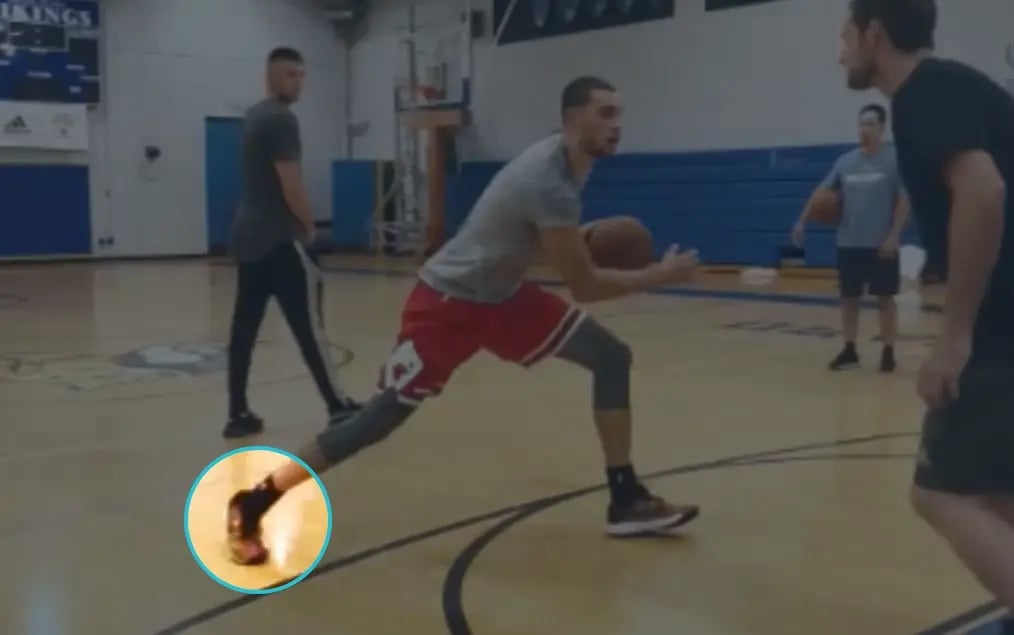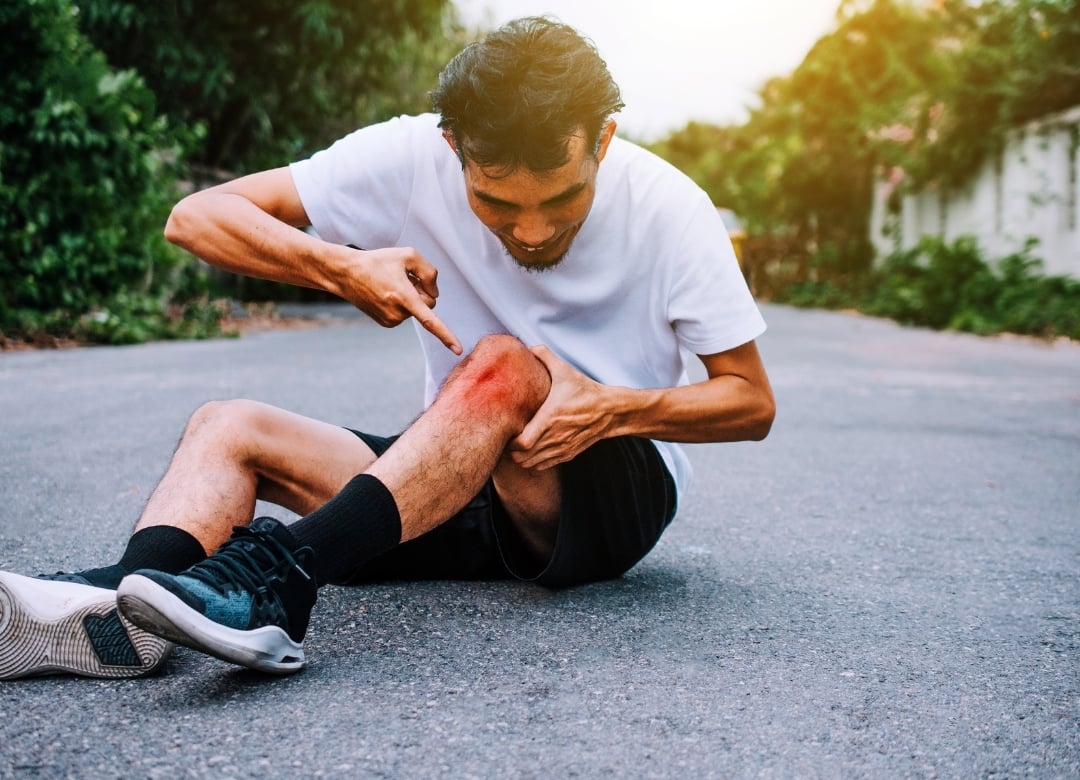
Why Your Shoulder Isn't Built Like Your Hip (How to Keep Them Strong)
A few weeks ago, one of Tampa’s best acrobatic athlete came into the clinic—frustrated, wincing, and clearly worn out from a tough week of training. She had been dealing with nagging shoulder pain for months. It wasn’t just sore anymore—it felt unstable, painful, limited her overhead function, and started to affect her confidence while performing.
Midway through her session, she paused and asked a question I’ve been asked hundreds of times before:
“Aren’t the shoulder and hip basically the same ball and socket joint? Why does my shoulder feel like it's always the one getting hurt?”
-2.png?width=356&height=200&name=Untitled%20design%20(1)-2.png)
It’s a great question. On the surface, it makes perfect sense. Both joints allow a ton of movement and they’re both used in powerful athletic movements—whether you're lifting, running, jumping, catching yourself from falling, or flying through the air.
But here’s the thing…
The Same… but Totally Different
Yes, the shoulder and hip are similar in that they both allow large ranges of motion. But they are designed for very different roles in your body.
Let’s break it down.
Your Hip: A Stability-First Joint
The hip joint is deep and surrounded by thick muscles like your glutes, hip flexors, groin muscles, and hip abductors. Not to mention, the hip joint is reinforced with some of the strongest ligaments in your body.

Your hip is designed to generate and absorb forces. Think sprinting, jumping, squatting, deadlifting, cutting, and climbing. It’s your power center.
And because of that design, your hip sacrifices some mobility to provide strength, power, and durability. It's like a tank: strong, stable, built to last.
Your Shoulder: A Mobility-First Joint
Now let’s talk about the shoulder.
Unlike the deep hip joint, your shoulder socket is shallow. The shoulder blade (scapula) essentially floats over the ribcage. The actual “ball” of your upper arm (the humerus) sits on the shallow socket. Think about it more like a golf ball sitting on a tee than a baseball inside a glove.

This setup allows your shoulder to reach in all different directions, throw, push, pull, press overhead, and do complex moves like handstands, snatches, or aerial flows. It’s built for maximal performance.
But here’s the catch: that freedom of movement comes at the cost of stability and increased demand of surrounding muscles.
Instead of relying on deep bony protection like the hip, your shoulder depends heavily on your rotator cuff and scapular muscles to work together for optimal control of the joint. If any part of that system breaks down—whether it’s strength, power, coordination, or control—you’re more prone to injury and instability.
In Short:
🟢 The hip is your body’s strong base — built for strength, load, power, and durability.
🟢 The shoulder is your mobile performer — built for complexity, speed, and range of motion.
What They Have in Common
Now, despite their structural differences, the shoulder and hip do share a few key similarities—especially when it comes to keeping them healthy and high-performing.
✅ Both rely on balanced, coordinated muscles working together in synergy around the joint.
✅ Both depend on mobility and control in full ranges of motion — not just raw strength.
✅ Both require consistent maintenance and strength training, especially for athletes and active adults.
Let’s be real: if you’re asking a lot from your body — lifting, running, training hard, or competing — you can’t afford to ignore joint health.
How to Keep Your Shoulder Healthy
Here are my go-to tips for building durable, high-performing shoulders:
- Train your rotator cuff and scapular muscles regularly.
Don’t just rely on pushing and pulling. Your rotator cuff keeps the ball centered in the socket with shoulder movement in all directions, and your shoulder blade sets the foundation for smooth shoulder mobility. Exercise example: CLICK HERE - Gradually build overhead strength and control.
Whether it’s pressing, pulling, snatching, or hanging from a bar — rushing overhead volume (especially after an injury or pushing through pain) is a fast track to chronic shoulder pain. Progress slowly and intentionally. Exercise example: CLICK HERE - Don’t skip thoracic and rib cage mobility.
Your mid-back (thoracic spine) and ribcage need to move well for your shoulders to function right. Tight upper backs force your shoulders to compensate and will limit true shoulder motion, which often leads to strains and tendinitis issues. Exercise example: CLICK HERE - Train the posterior chain of the shoulder.
Rear delts, rotator cuff external rotators, rhomboids, and lower traps often get neglected. These muscles are crucial for balanced pressing and pulling. Exercise example: CLICK HERE - Make sure internal AND external rotation range of motion is solid and stable.
Most athletes should have over 80 degrees of total rotation range at the shoulder in both directions. Limitations here can lead to a faulty system between the shoulder and scapula, impingement, and long-term strain and irritation. Exercise example: CLICK HERE
How to Keep Your Hip Healthy
Now let’s talk hips. These tips will help you stay strong, mobile, and resilient to injury from the ground up.
- Strengthen your glutes.
The glutes are your engine. Strong glutes keep your knees, hips, and lower back healthy and operating efficiently during running, jumping, lifting, and cutting. The glutes are strengthened the best when fully lengthened, like at the bottom of an RDL. Exercise example: CLICK HERE - Don’t skip single-leg strength and stability.
Movements like split squats, step-ups, reverse lunges, and single-leg RDLs challenge your strength and control, which translates directly to better movement on the field or in the gym. Any imbalances here will be found in the exercise and can be trained to match the stronger side. Exercise example: CLICK HERE - Load your hips through full ranges of motion.
Instead of only doing static stretches (like pigeon pose), add active mobility work like hip airplanes or curtsy squats. These drills strengthen while improving mobility. - Use dynamic mobility flows.
Drills like 90/90 reaches, shin box flips, and hip fire hydrants help you gain usable motion that carries over to your sport.
What This Means for You
If you’re an athlete or active adult in Tampa, whether you're lifting in the gym, hooping on the weekends, or chasing PRs on the track, your shoulder and hip health are a non-negotiable.
Don’t wait until pain or injury stops your training to start paying attention.
The truth is, both joints will serve you well for years to come if you give them the support they need: strength, power, mobility, and control.
Feeling Something Off?
Shoulder or hip bugging you lately? Feel unstable, restricted, or unsure how to get back to full strength?
Let’s figure it out together before it sidelines your training.
We help athletes and active adults get out of pain and back to doing what they love faster and smarter.
Dr. Bryant Villota, PT, DPT, MBA, LAT, ATC
Crossover Physical Therapy and Performance
P.S. Got a question about your shoulder, hip, or training? Drop a comment or shoot me a message. I read every one.

-1.png?width=851&height=315&name=Untitled%20design%20(2)-1.png)
